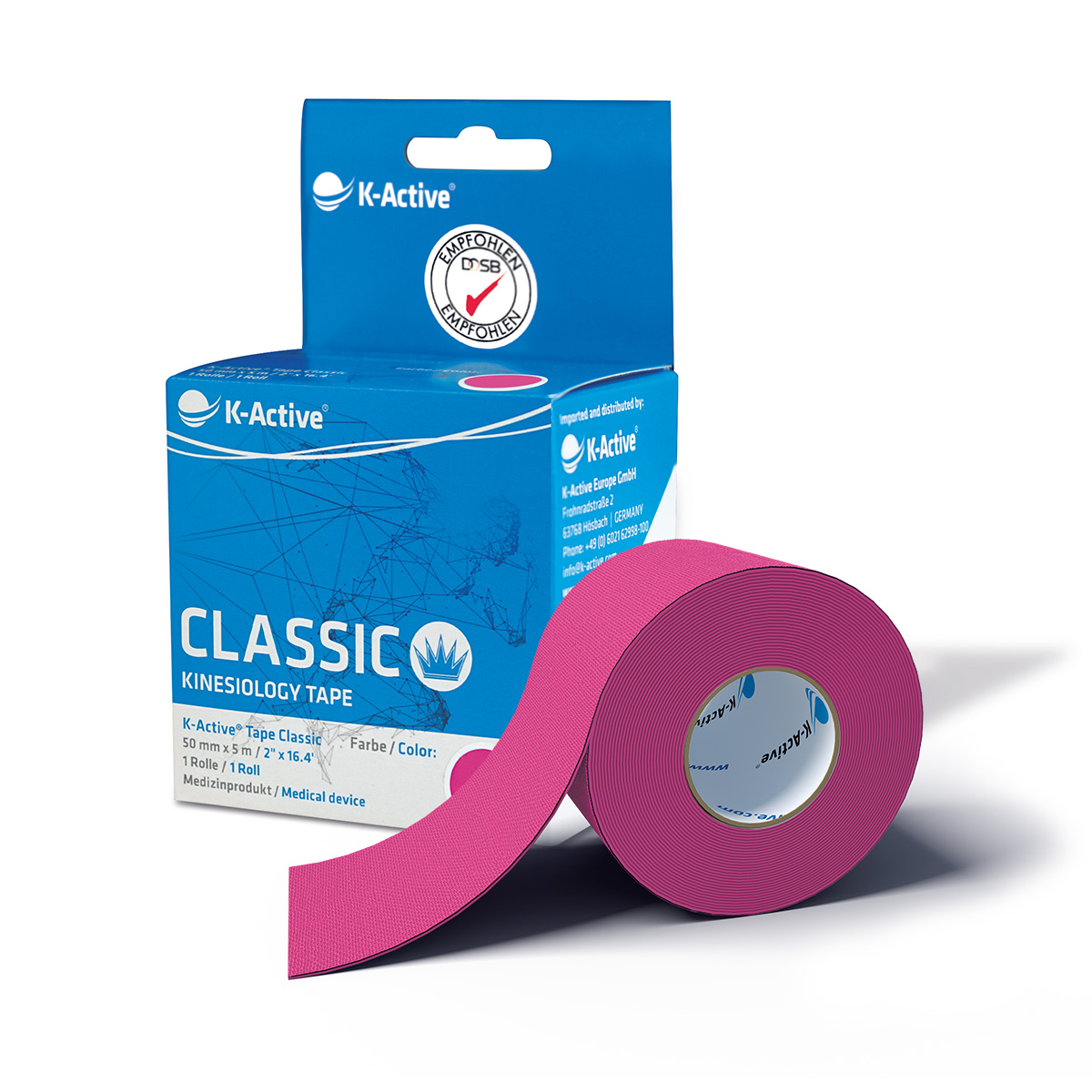Information
Taping hamstring- Tips

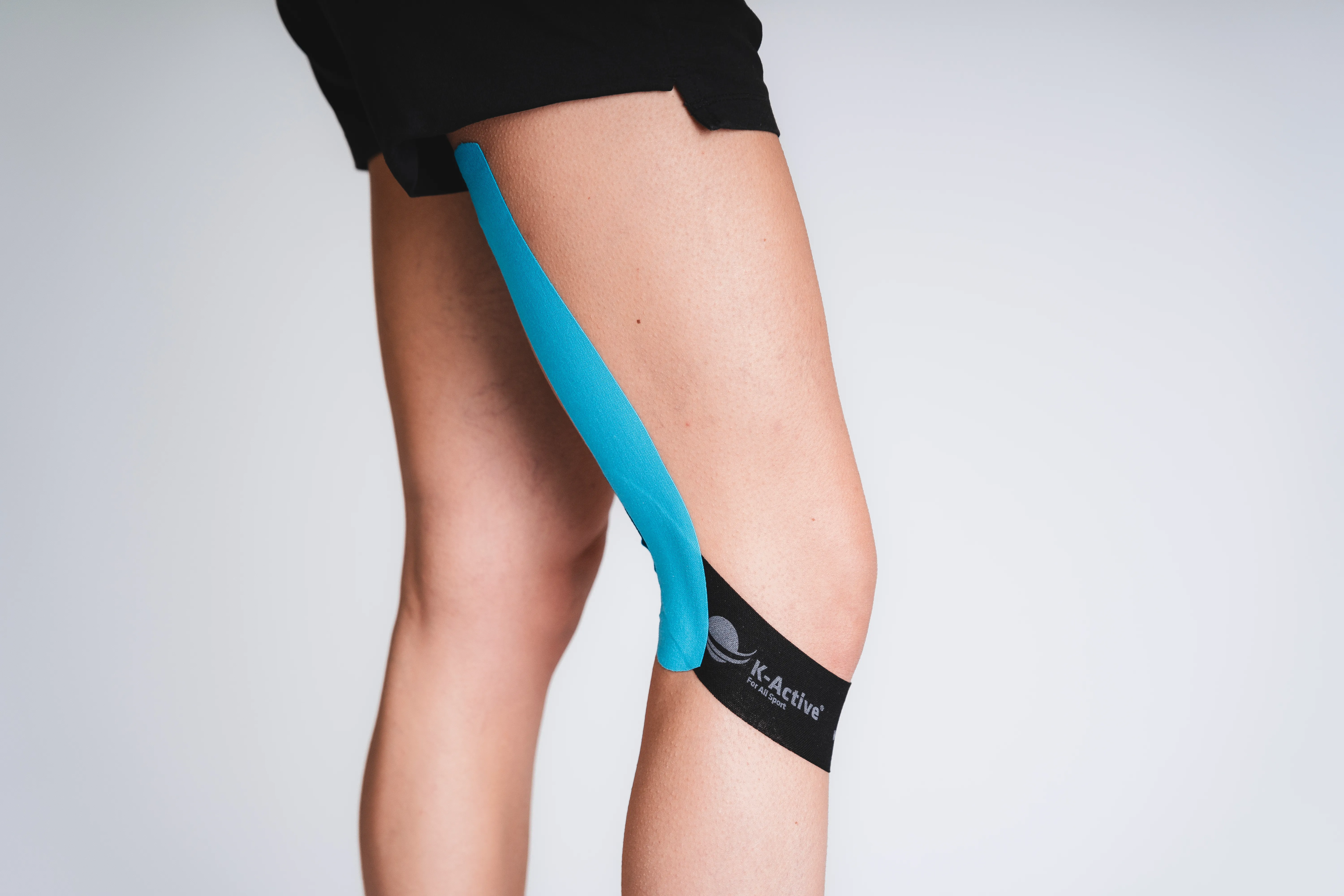
K-Active
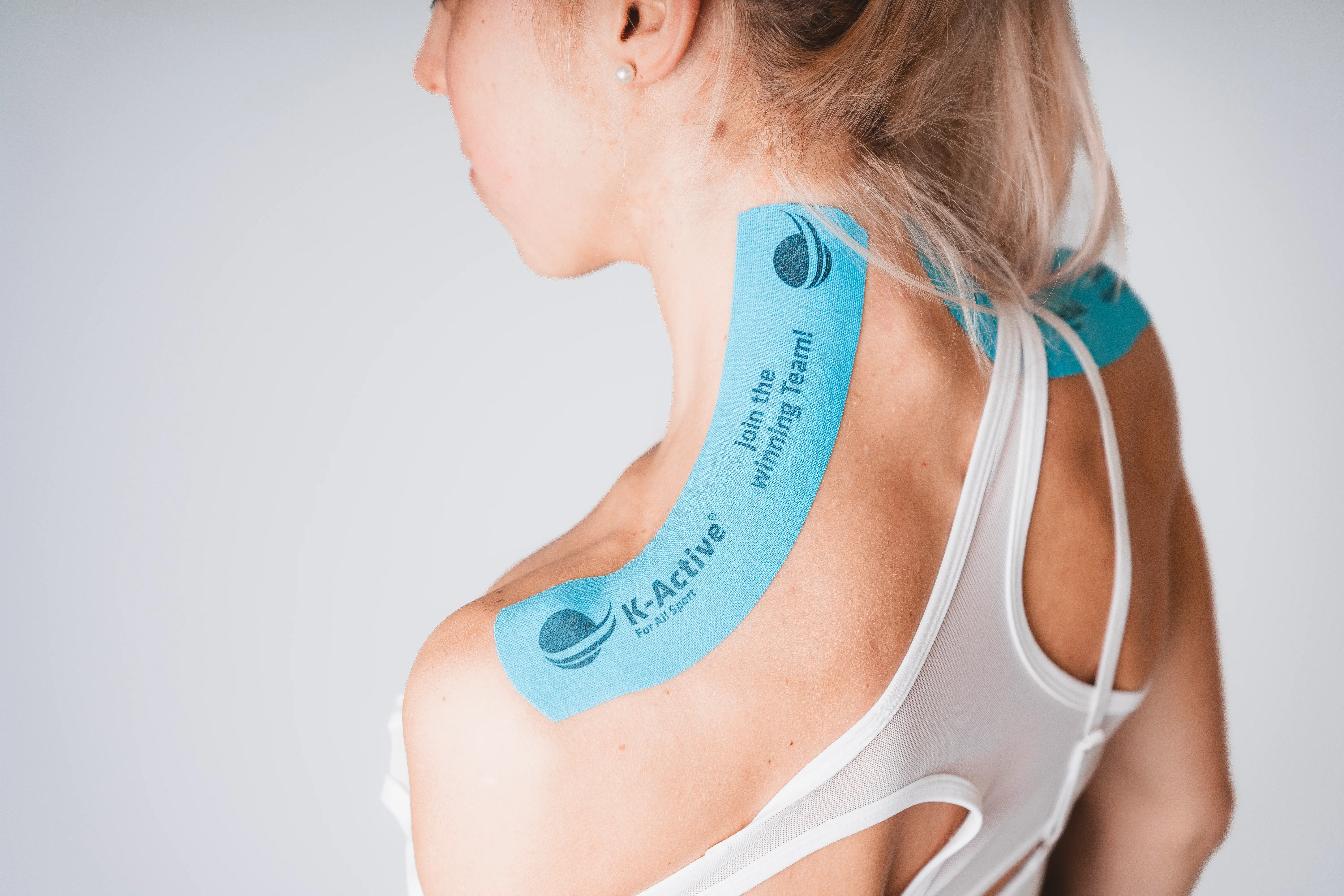
K-Active

K-Active
2 tape strips:
Up to 7 days
2 tape strips:
Up to 7 days
Pain in the back of the thigh, also known as hamstring pain, is a common problem that can affect people of all ages. The hamstring muscles consist of three main muscles that enable movements such as bending the knee and extending the hip. Causes of hamstring pain are varied and can include muscle strains, overuse from sports activities, tendonitis and injuries such as muscle fiber tears. Symptoms often include pain in the back of the thigh, which can radiate to the buttocks or the back of the knee, as well as stiffness and limited mobility.
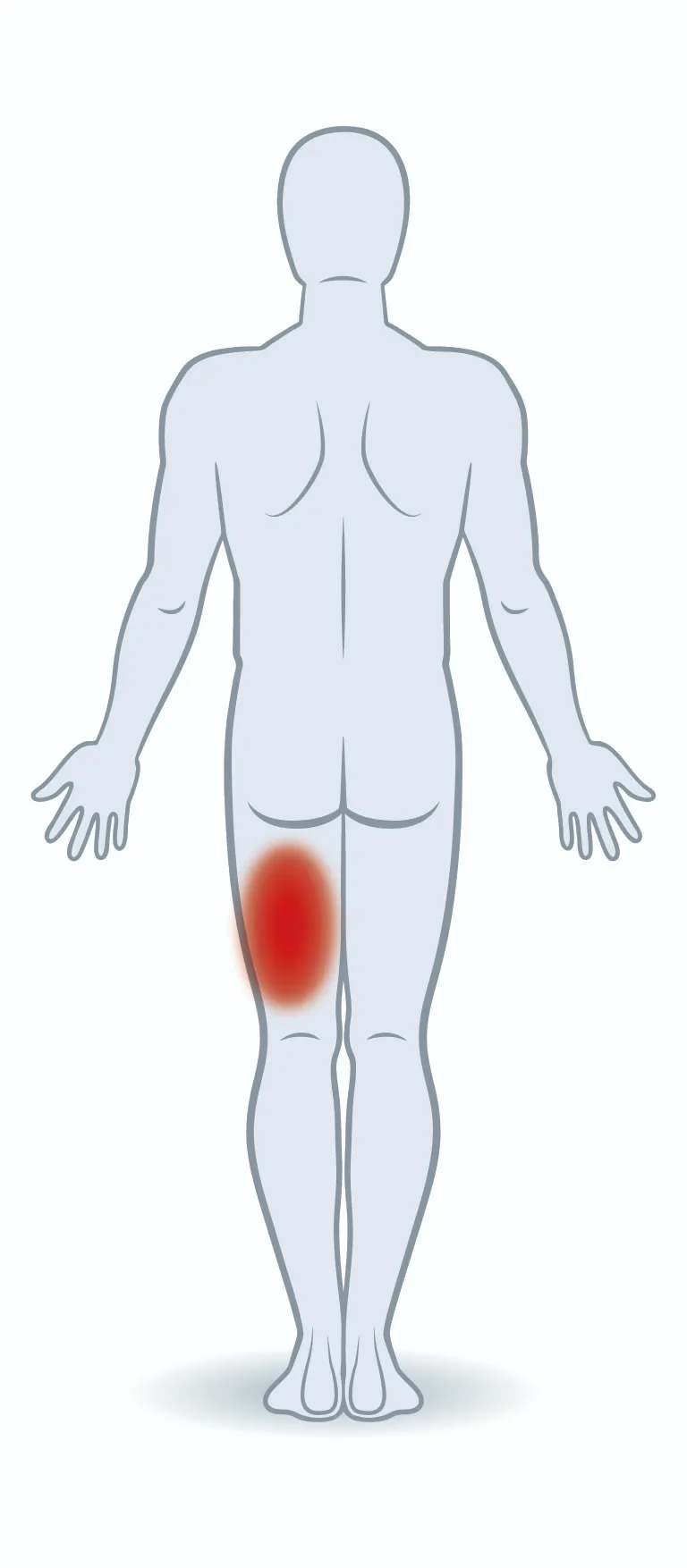
Pain in the back of the thigh, also known as hamstring pain, is a common problem that can affect people of all ages. The hamstring muscles consist of three main muscles that enable movements such as bending the knee and extending the hip. Causes of hamstring pain are varied and can include muscle strains, overuse from sports activities, tendonitis and injuries such as muscle fiber tears. Symptoms often include pain in the back of the thigh, which can radiate to the buttocks or the back of the knee, as well as stiffness and limited mobility.

Information
General information on the hamstring
The hamstrings are a group of three muscles on the back of the thigh, consisting of the biceps femoris muscle, the semitendinosus muscle and the semimembranosus muscle. The interaction of these muscles is responsible for flexing the knee and extending the hip and play an essential role in activities such as running and jumping. The hamstrings connect the pelvis to the lower leg and are surrounded by a strong tendon and ligament structure that ensures stability and flexibility. Well-trained and stretched hamstring muscles are crucial for preventing injury and maintaining leg mobility and strength.
General information on the hamstring
The hamstrings are a group of three muscles on the back of the thigh, consisting of the biceps femoris muscle, the semitendinosus muscle and the semimembranosus muscle. The interaction of these muscles is responsible for flexing the knee and extending the hip and play an essential role in activities such as running and jumping. The hamstrings connect the pelvis to the lower leg and are surrounded by a strong tendon and ligament structure that ensures stability and flexibility. Well-trained and stretched hamstring muscles are crucial for preventing injury and maintaining leg mobility and strength.
Causes of pain in the back of the thigh (hamstring pain)
Back thigh pain can be caused by a variety of factors that affect the soft tissues and muscles of the back of the thigh. Here are some of the most common causes:
Causes of pain in the back of the thigh (hamstring pain)
Back thigh pain can be caused by a variety of factors that affect the soft tissues and muscles of the back of the thigh. Here are some of the most common causes:
How does K-Active® Tape help for hamstring pain?
K-Active® Tape provides targeted support for hamstring pain by stabilizing and relieving the affected area. The elastic properties of the tape allow it to adapt to the movements of the muscles without restricting freedom of movement. This supports the muscles and reduces the strain on the hamstrings. The gentle lifting of the skin by the tape promotes blood circulation and lymph flow, which reduces swelling and inflammation. At the same time, the tape stimulates the sensory receptors, which helps to reduce the perception of pain. This multifunctional effect of K-Active® tape helps to speed up the healing process and prevent re-injury.
How does K-Active® Tape help for hamstring pain?
K-Active® Tape provides targeted support for hamstring pain by stabilizing and relieving the affected area. The elastic properties of the tape allow it to adapt to the movements of the muscles without restricting freedom of movement. This supports the muscles and reduces the strain on the hamstrings. The gentle lifting of the skin by the tape promotes blood circulation and lymph flow, which reduces swelling and inflammation. At the same time, the tape stimulates the sensory receptors, which helps to reduce the perception of pain. This multifunctional effect of K-Active® tape helps to speed up the healing process and prevent re-injury.
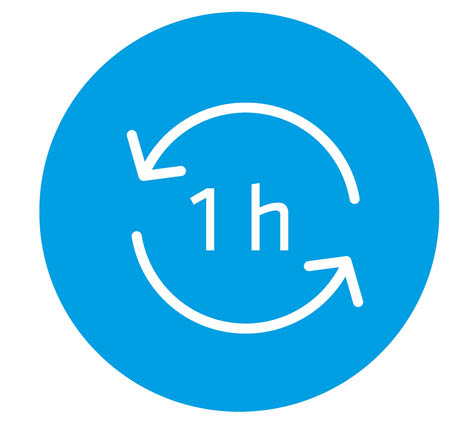

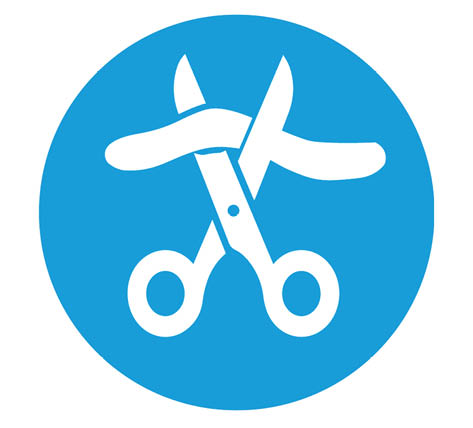
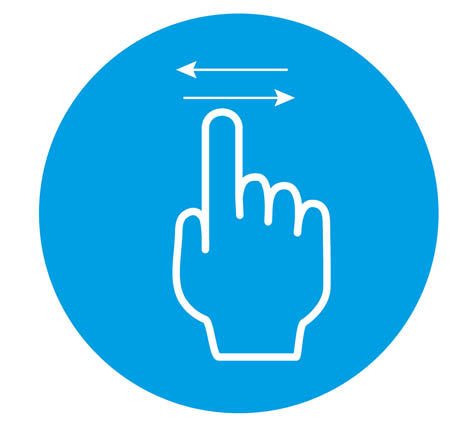

Apply before activity

Apply before activity

Dry & clean skin

Round off tape edges

Rub over tape after applying

Do not wear for more than 7 days
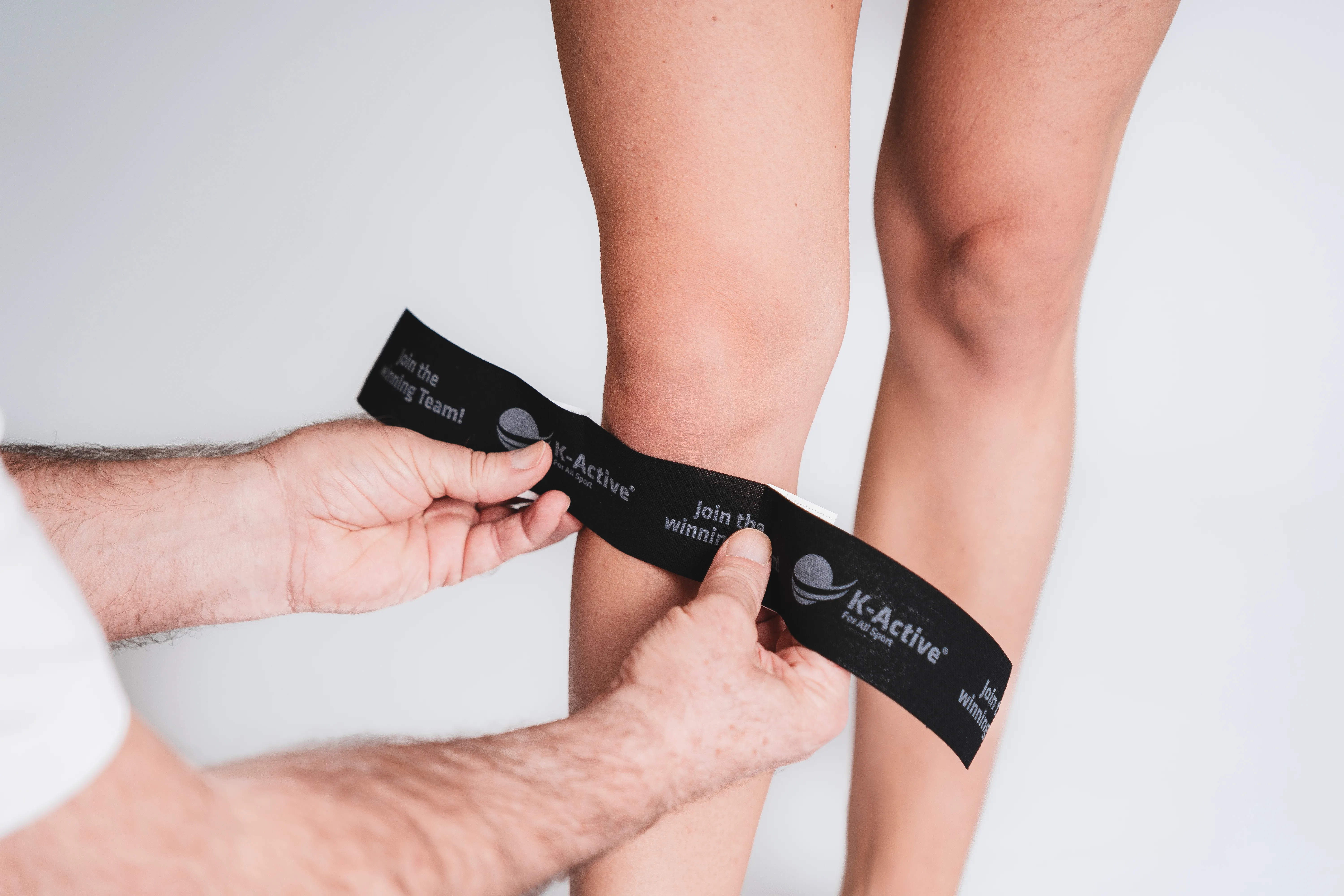
➾ 1.
Measure the length of the tape strip by holding the tape from the underside of the knee to the back of the thigh.
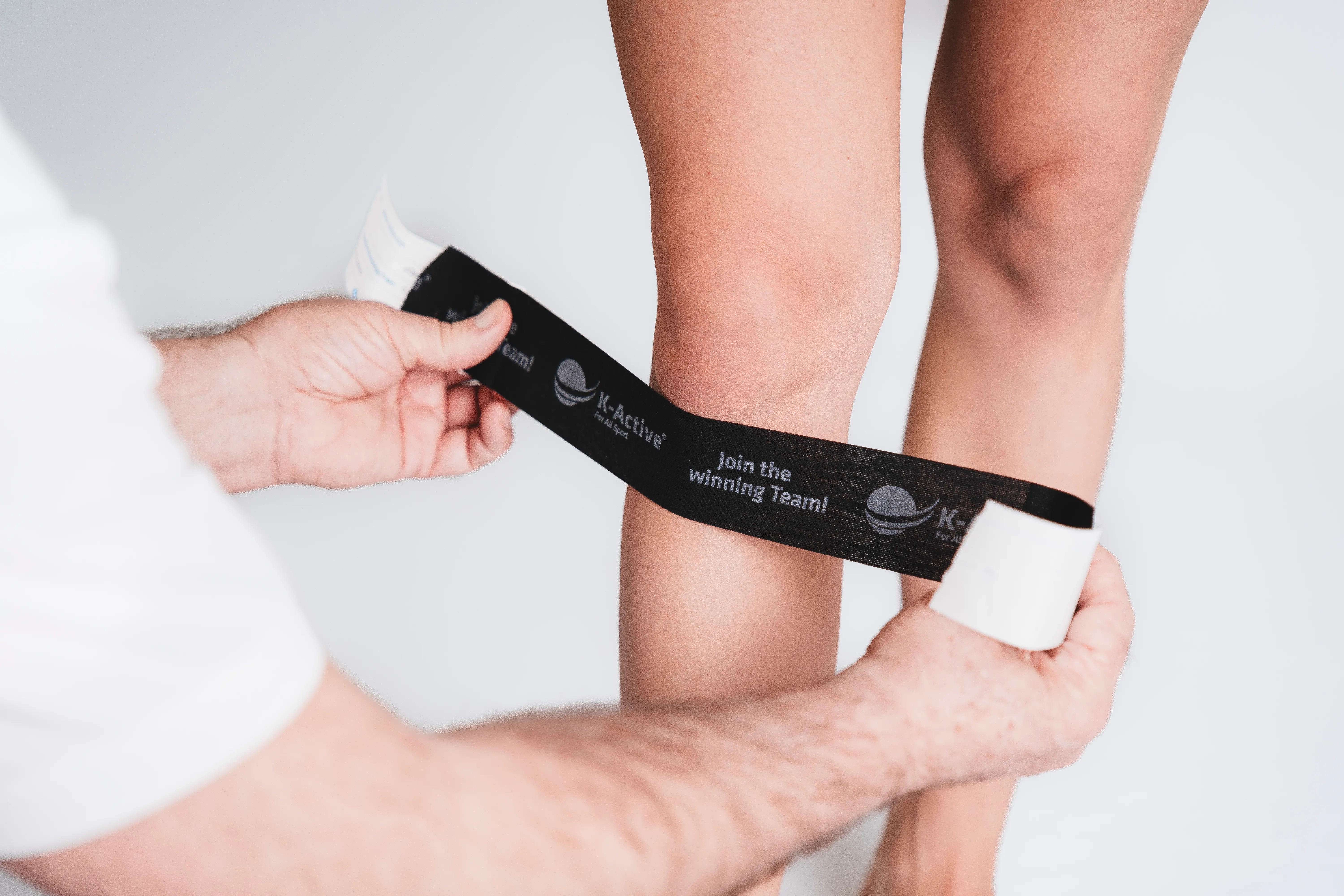
➾ 2.
Apply the base of the tape strip without tension (0% stretch) just below the knee (patella).
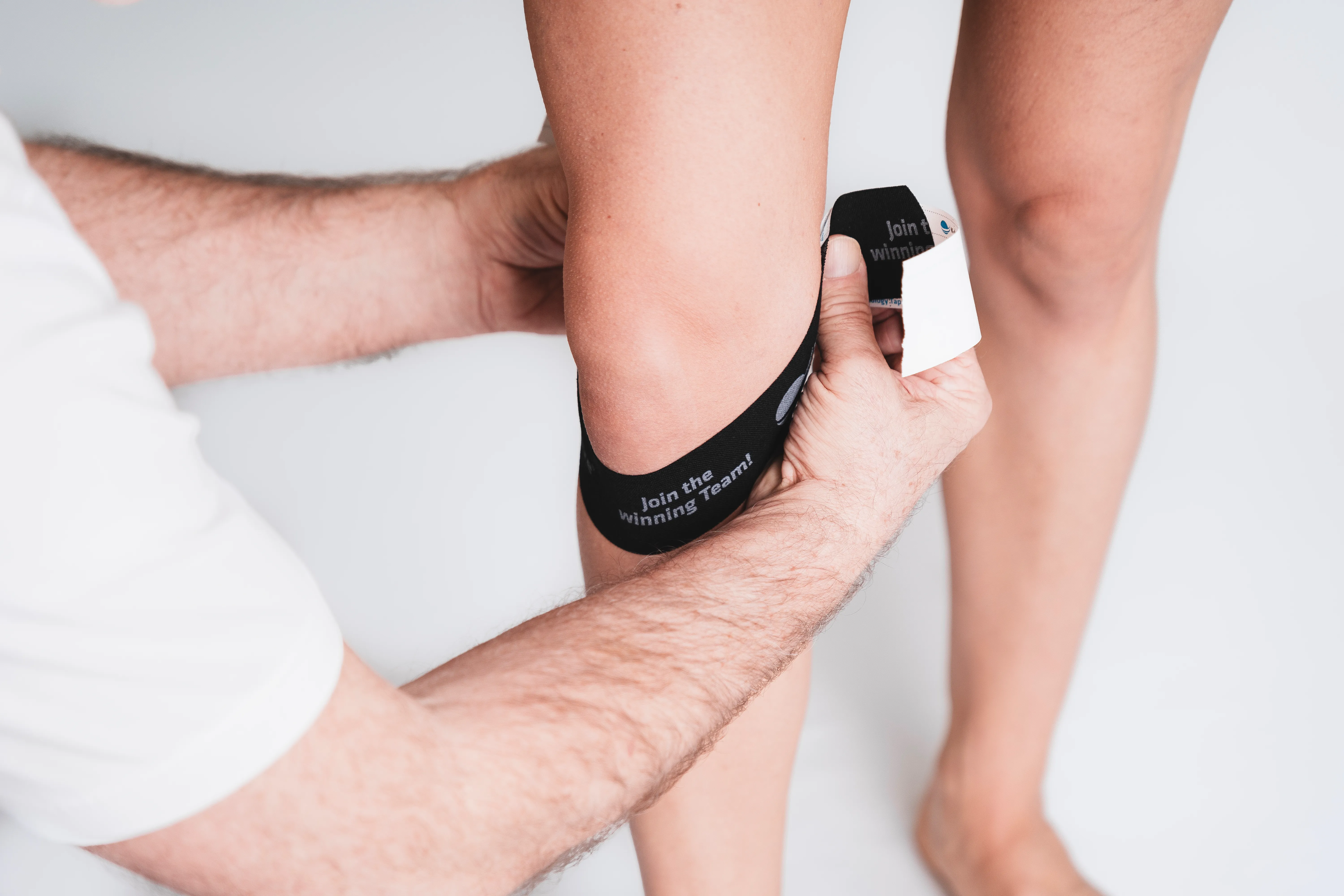
➾ 3.
Slowly peel off the protective paper on both sides of the tape while pulling the tape slightly (10-15% stretch) backwards and upwards towards the back of the thigh.

➾ 1.
Measure the length of the tape strip by holding the tape from the underside of the knee to the back of the thigh.

➾ 2.
Apply the base of the tape strip without tension (0% stretch) just below the knee (patella).

➾ 3.
Slowly peel off the protective paper on both sides of the tape while pulling the tape slightly (10-15% stretch) backwards and upwards towards the back of the thigh.
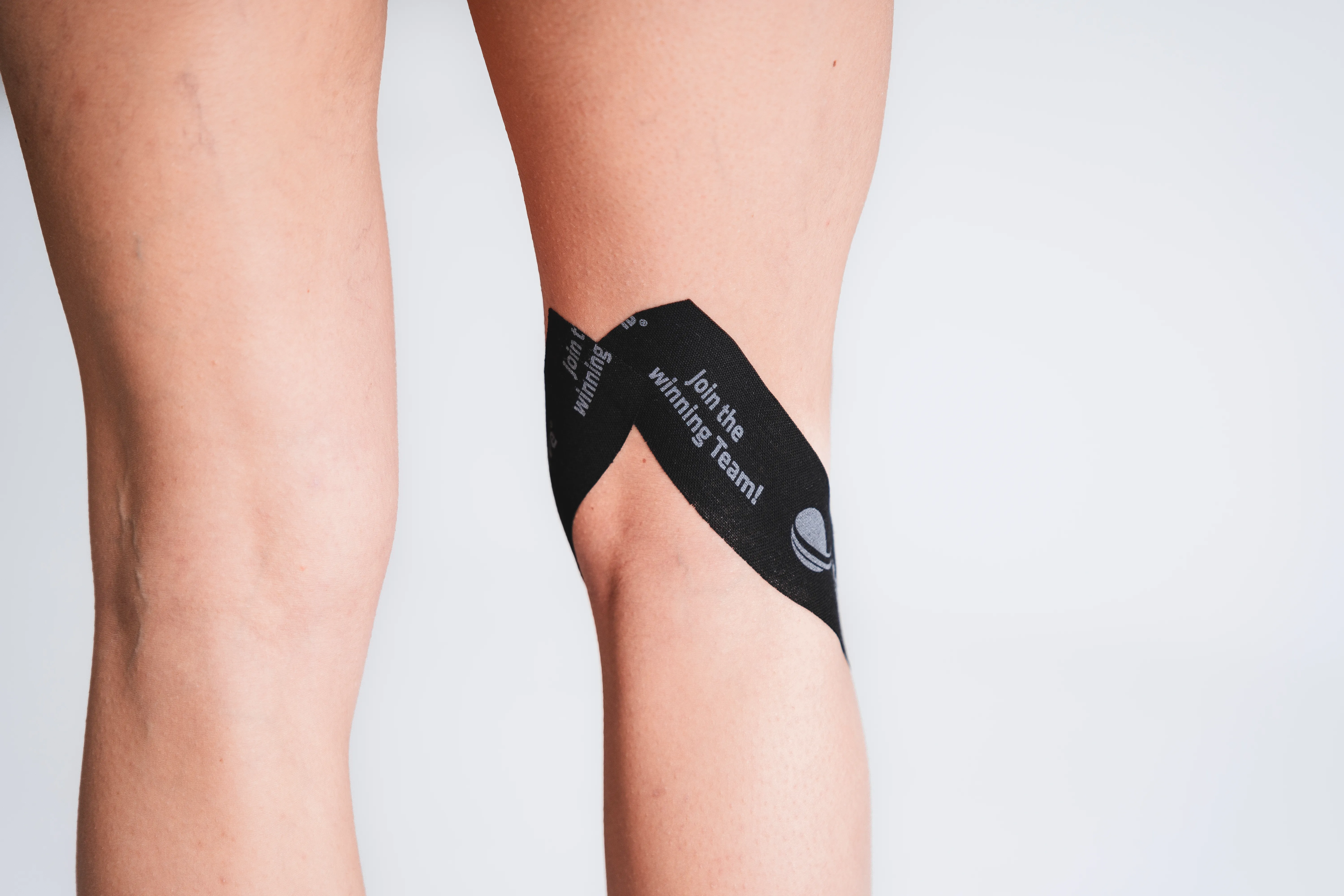
➾ 4.
Tape both ends of the tape at the level of the lower third of the back of the thigh.
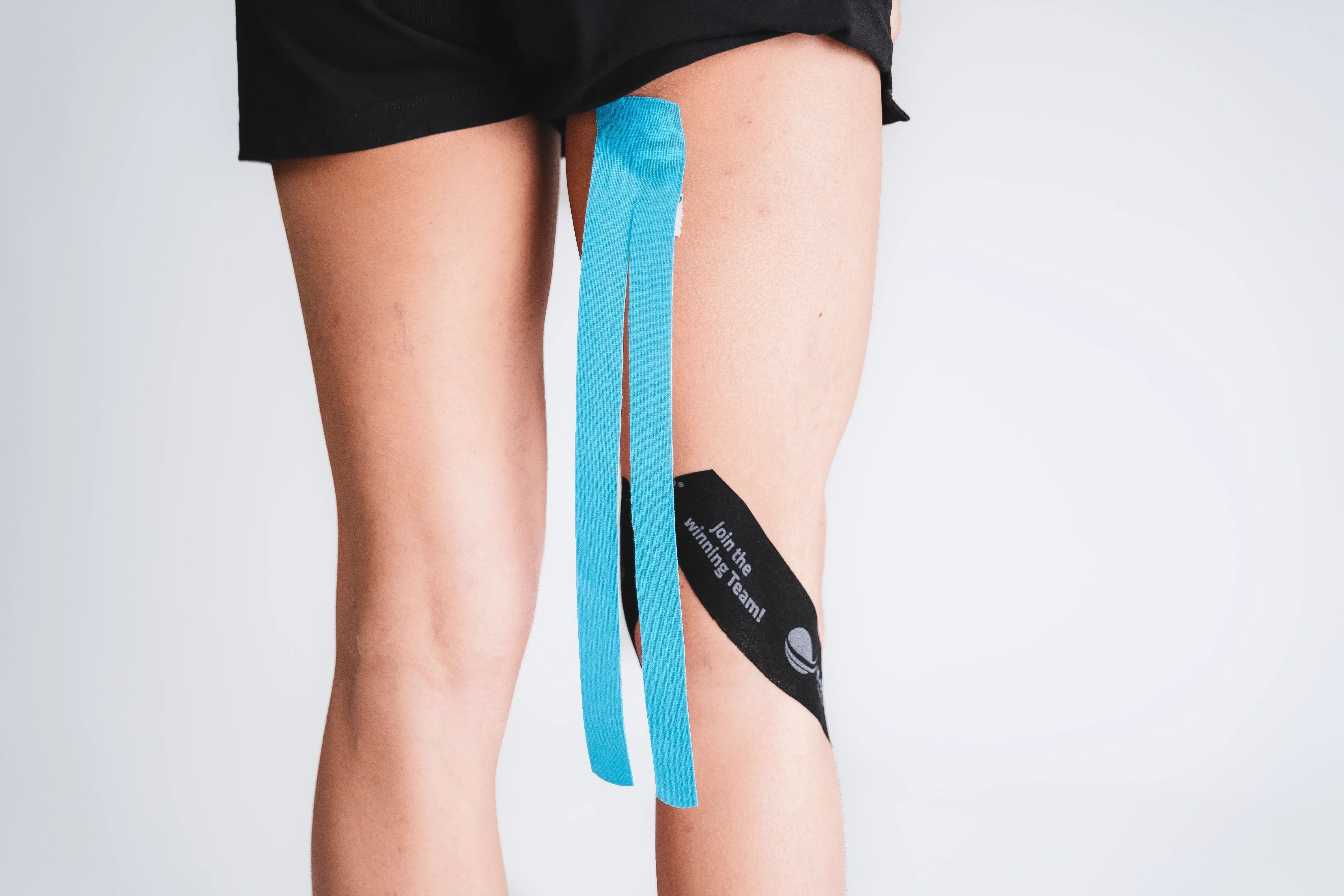
➾ 5.
Now apply the base of the blue tape strip below the large gluteal muscle.
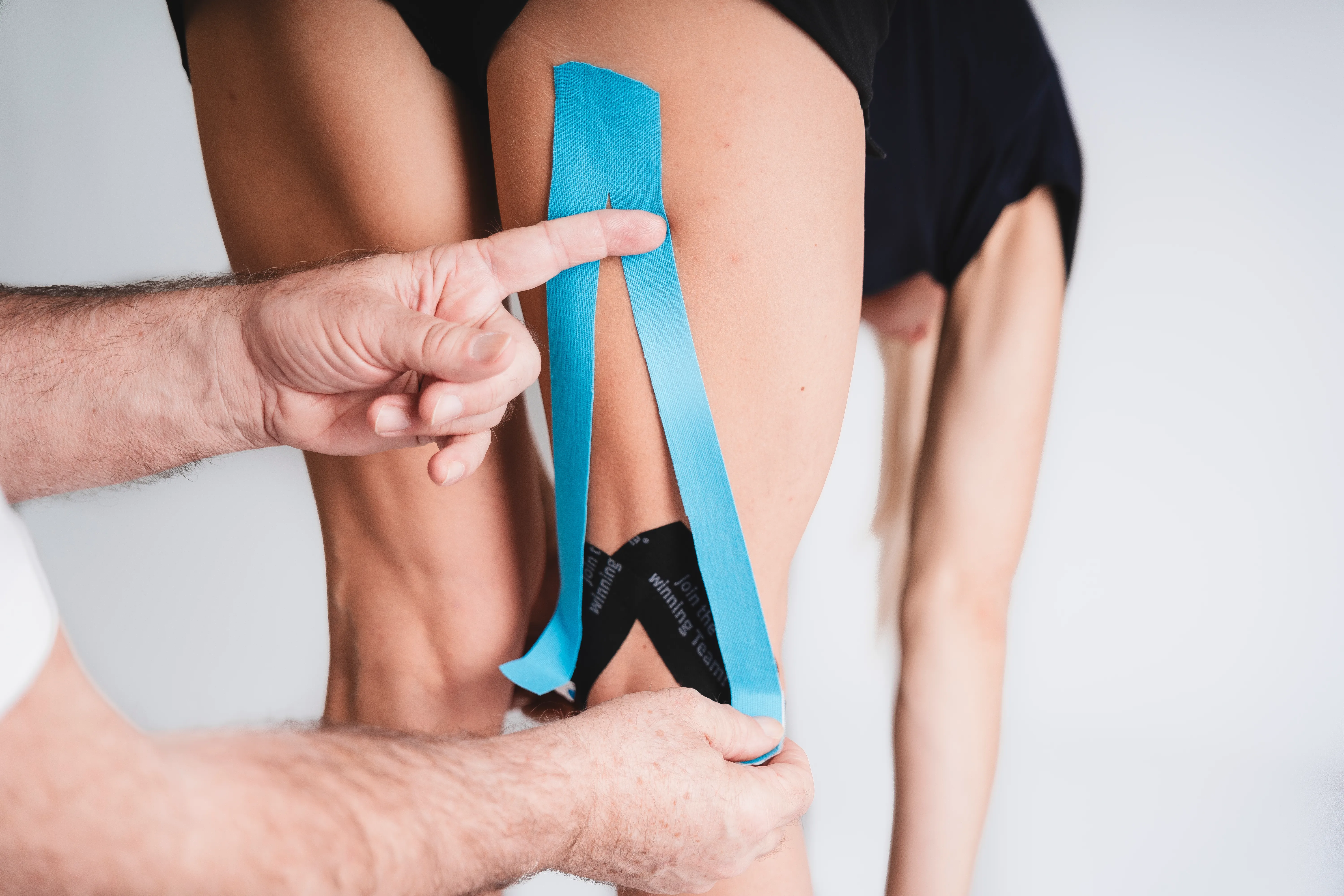
➾ 6.
While bending forward, apply the first rein of the tape without tension (0% stretch) along the back of the thigh.

➾ 4.
Tape both ends of the tape at the level of the lower third of the back of the thigh.

➾ 5.
Now apply the base of the blue tape strip below the large gluteal muscle.

➾ 6.
While bending forward, apply the first rein of the tape without tension (0% stretch) along the back of the thigh.
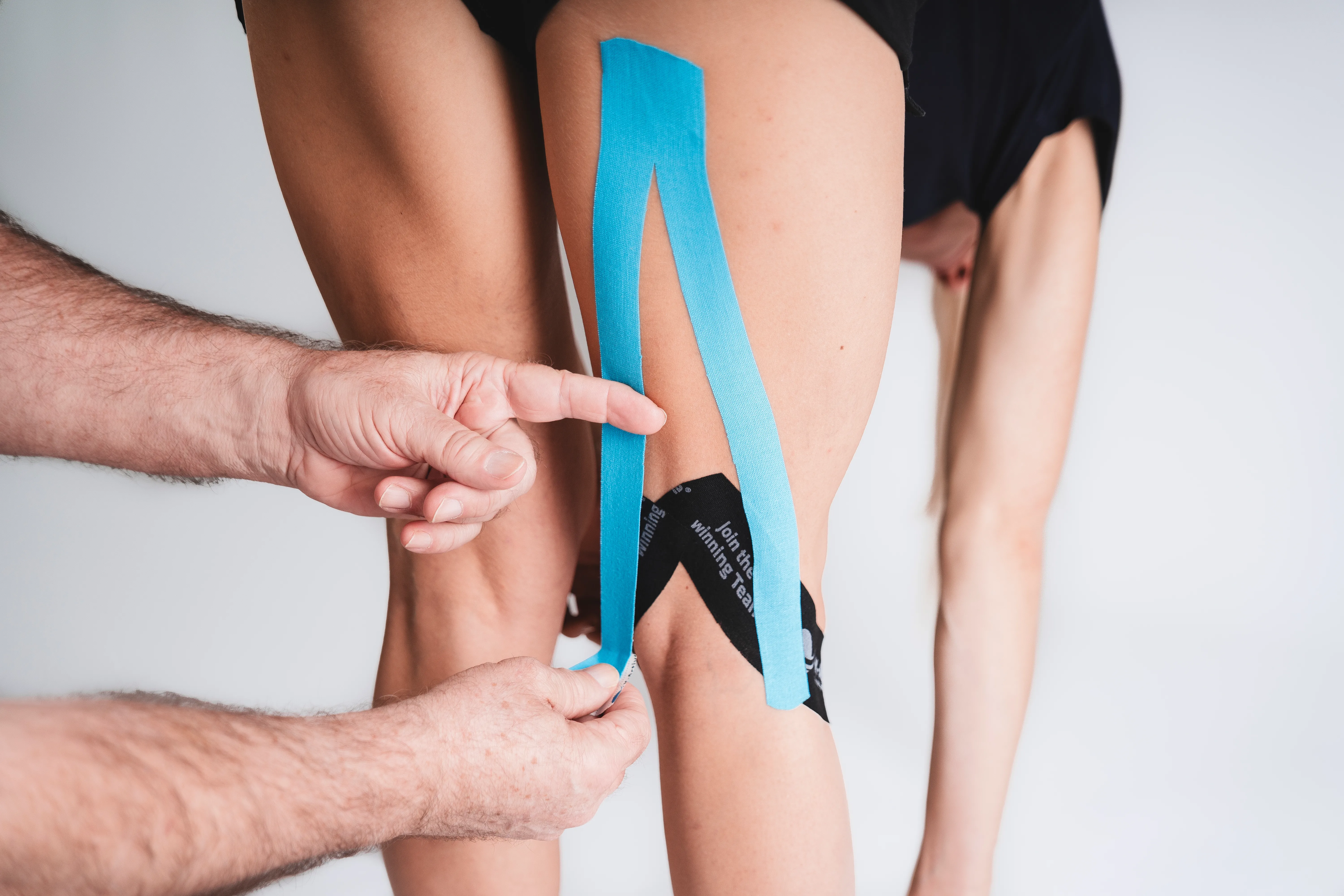
➾ 7.
Apply the second rein in the same way.
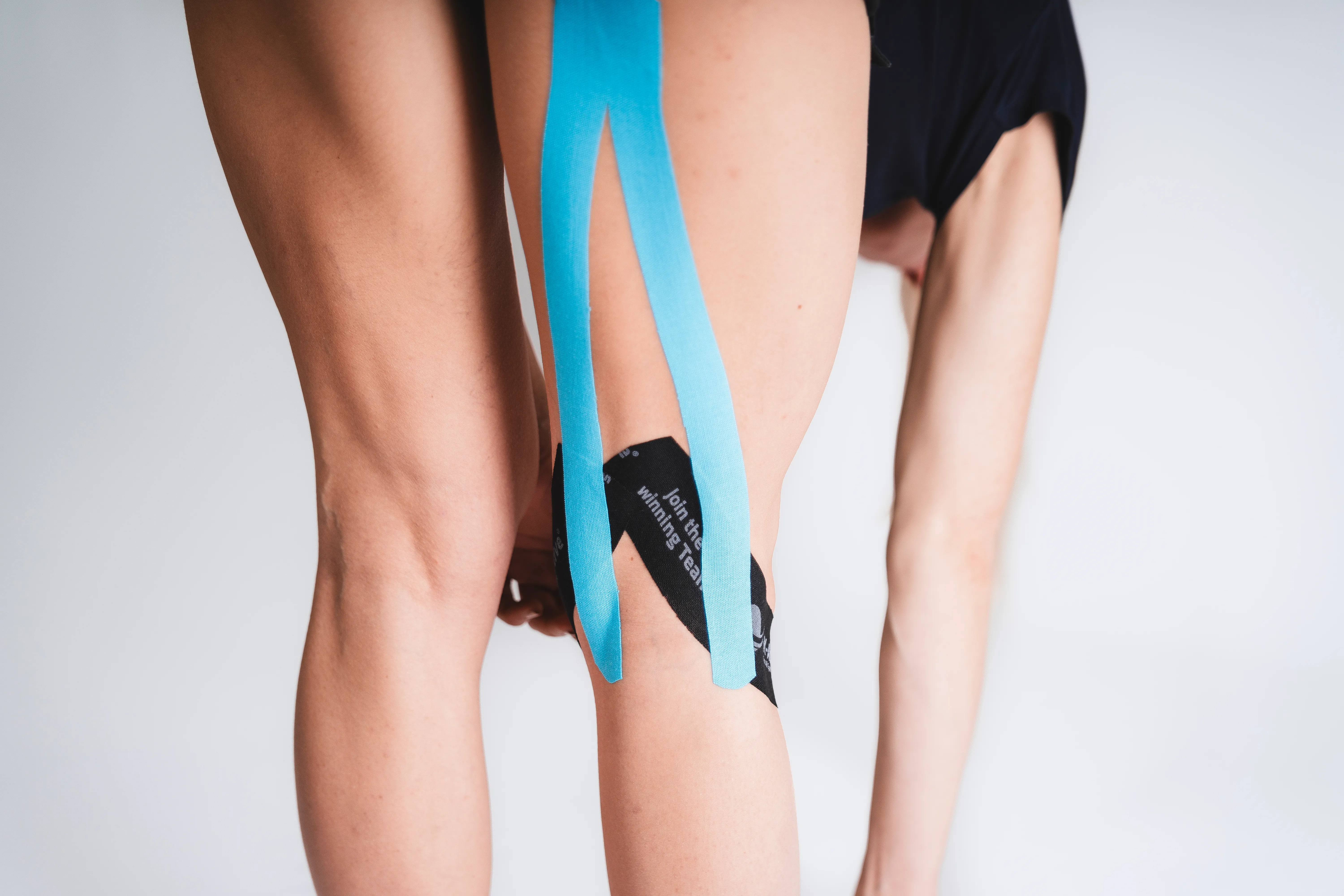
➾ 8.
Now smooth everything out again and activate..
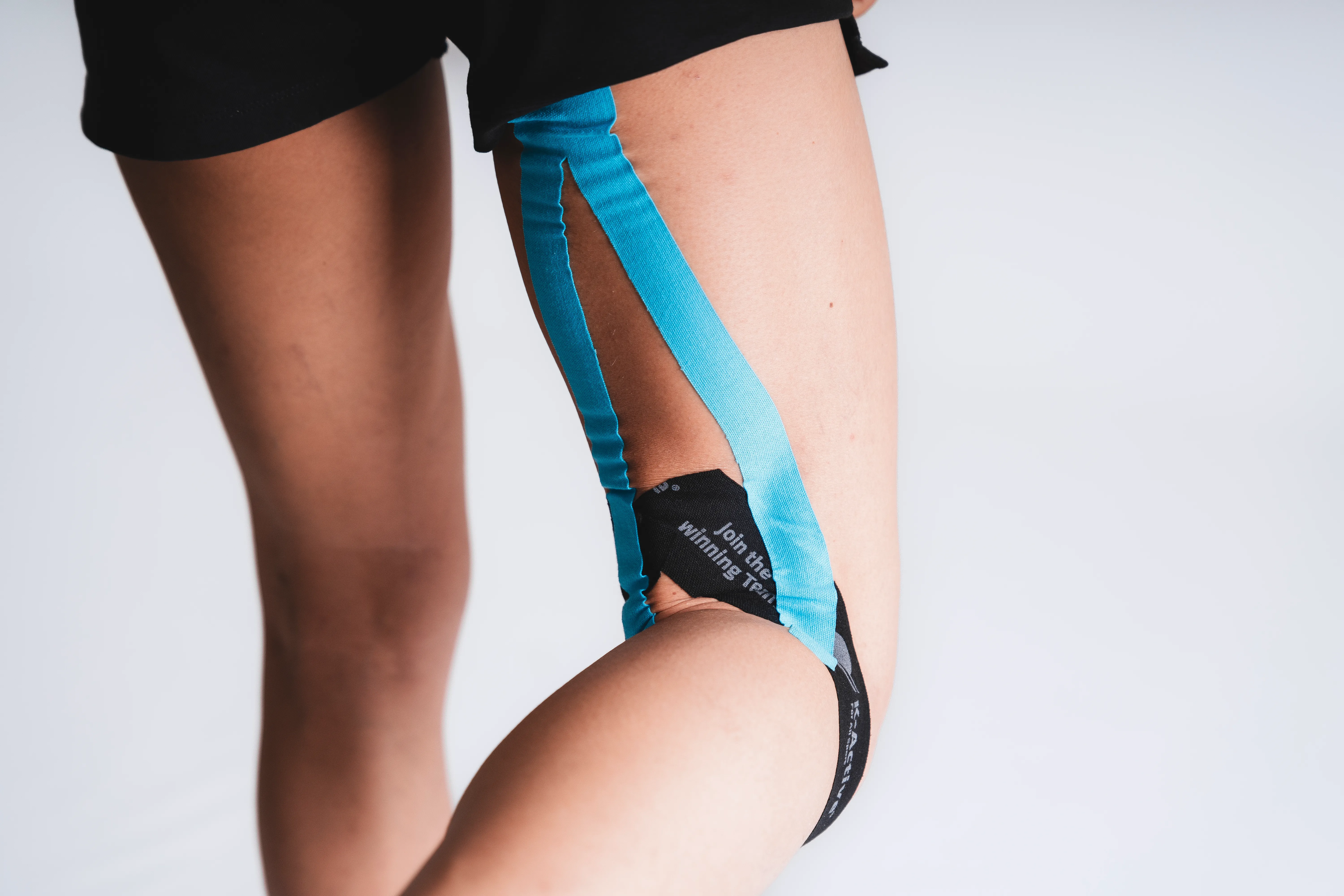
➾ 9.
😁 The application on the hamstring is complete.

➾ 7.
Apply the second rein in the same way.

➾ 8.
Now smooth everything out again and activate..

➾ 9.
😁 The application on the hamstring is complete.
Tape application on the hamstring with two strips of tape
Tape application on the hamstring with two strips of tape
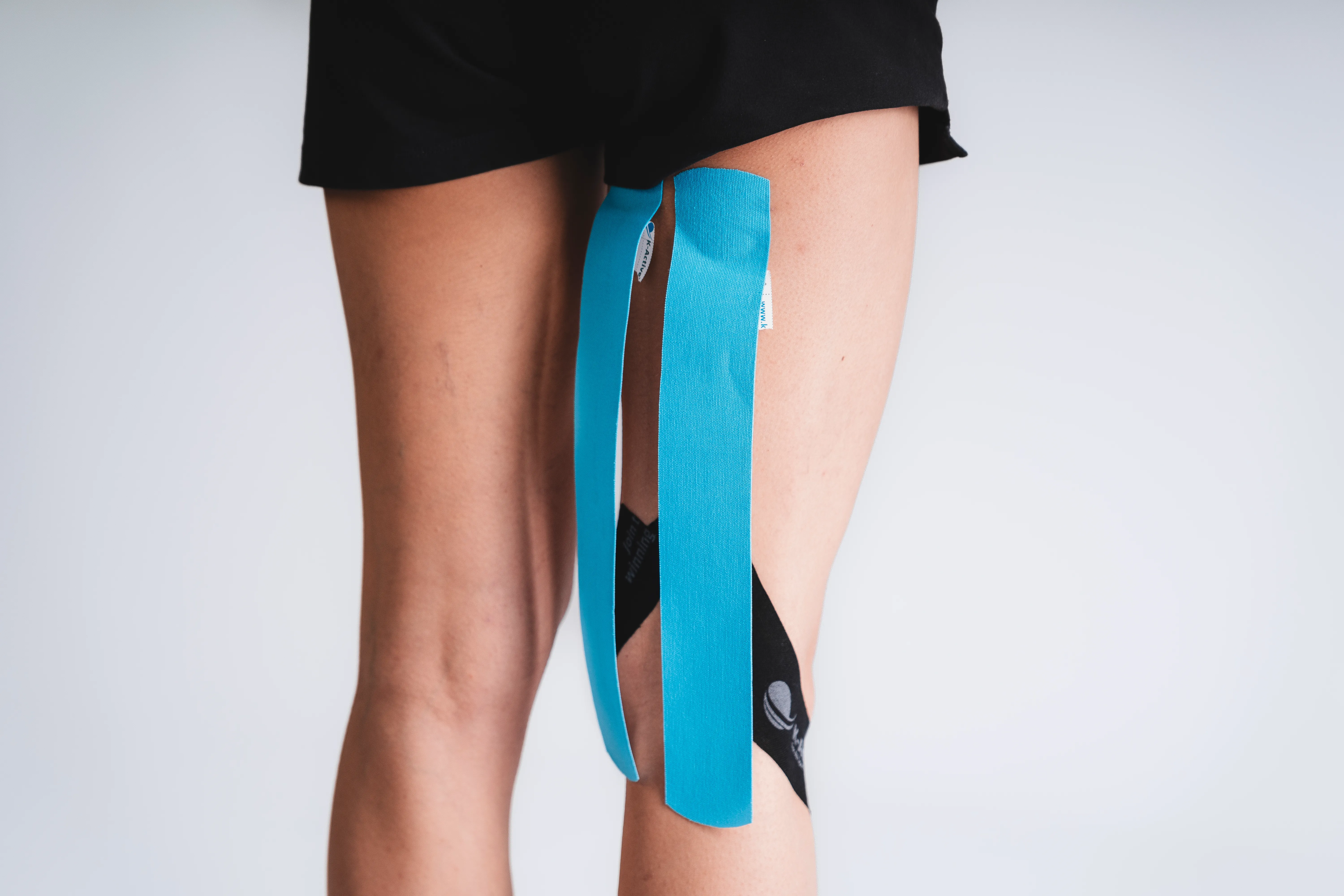
➾ 4.
Carry out steps 1 - 4 as before. Then tape the base of both tape strips underneath the gluteal muscle.
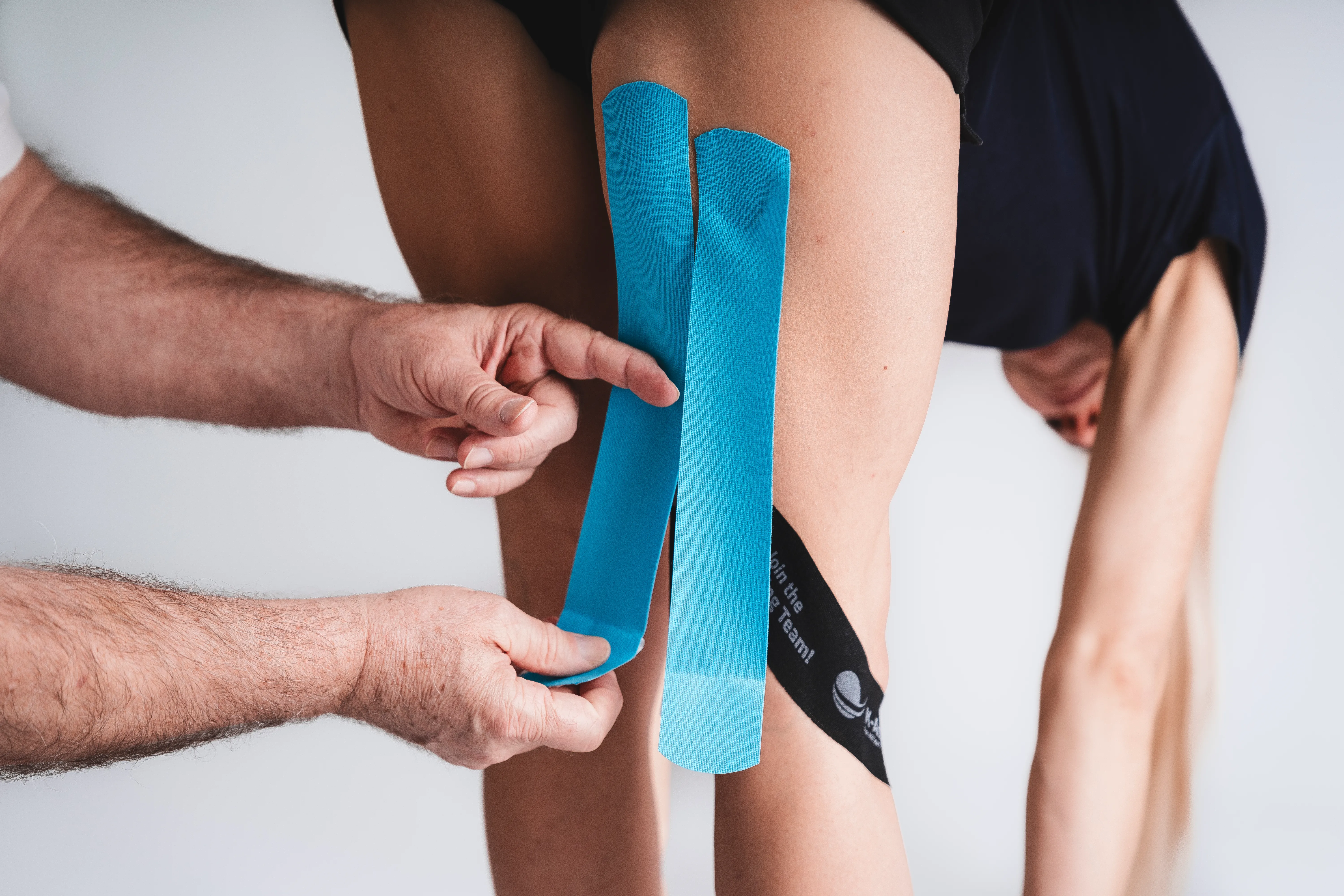
➾ 5.
While bending forward, first apply the left strip of tape along the thigh without stretch (0%) .
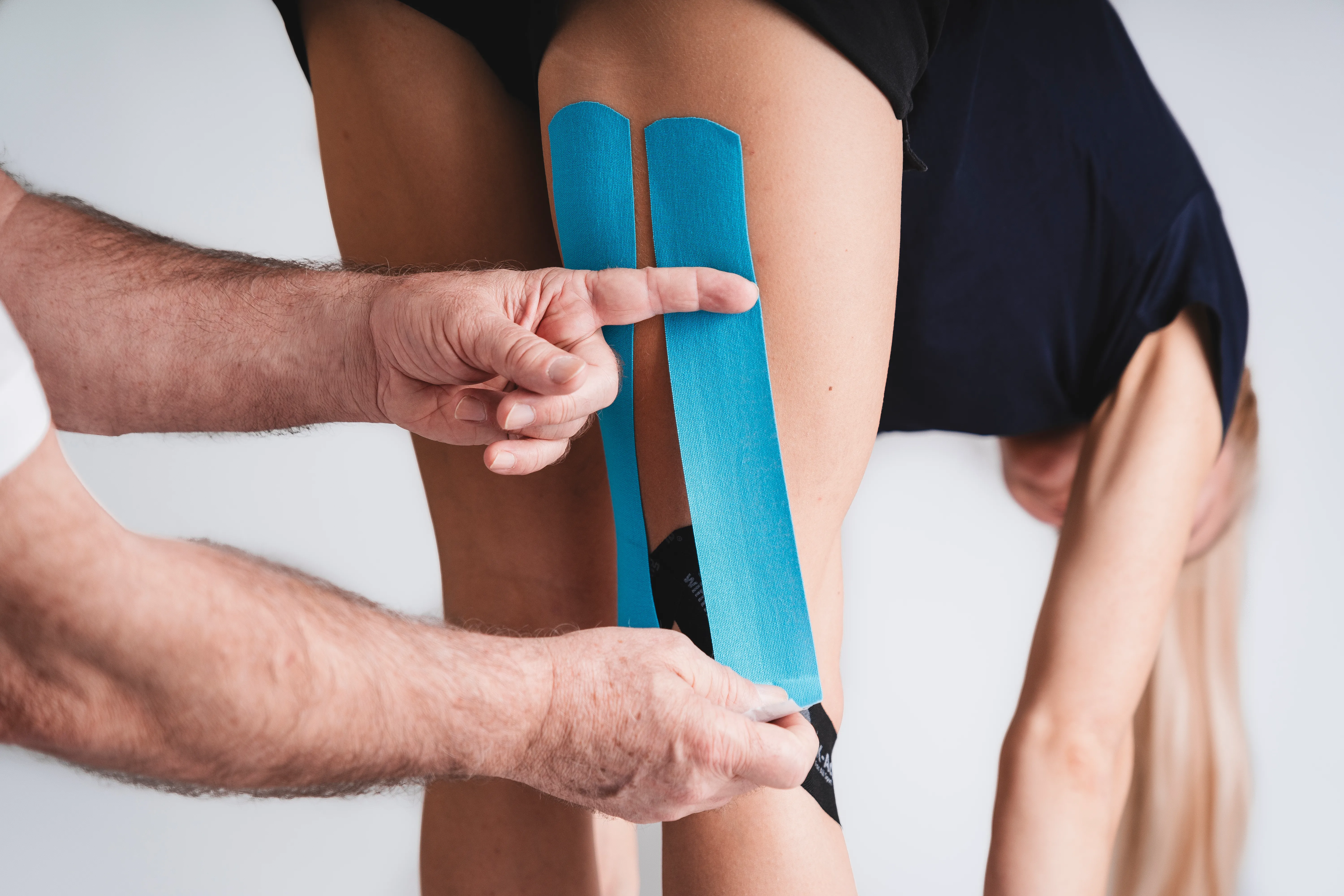
➾ 6.
Apply the right tape in the same way

➾ 4.
Carry out steps 1 - 4 as before. Then tape the base of both tape strips underneath the gluteal muscle.

➾ 5.
While bending forward, first apply the left strip of tape along the thigh without stretch (0%) .

➾ 6.
Apply the right tape in the same way
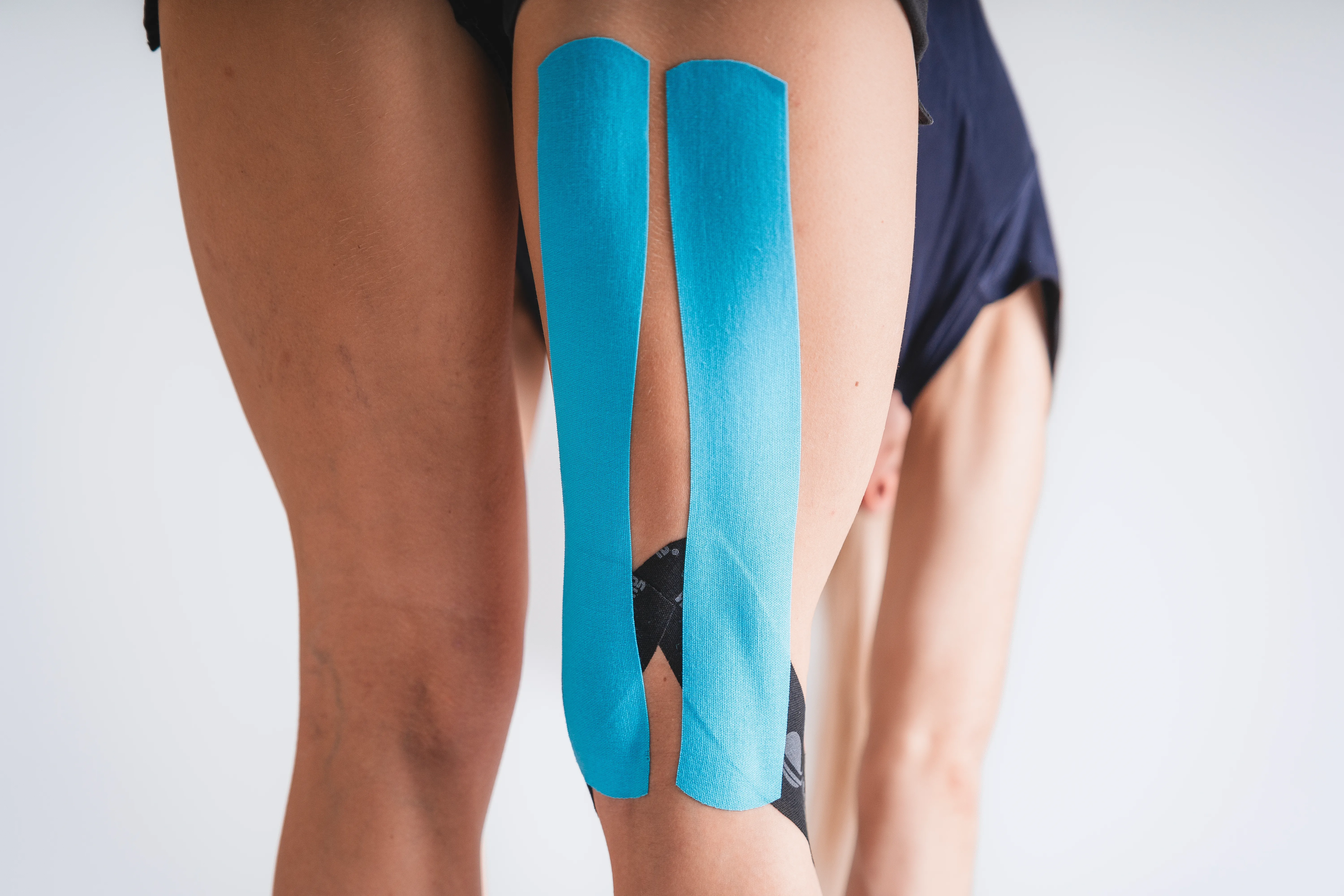
➾ 4.
To activate the tape and improve adhesion, stroke over the two tapes again.

➾ 5.
😁 Variant 2 for applying tape to the back of the thigh is finished..

➾ 4.
To activate the tape and improve adhesion, stroke over the two tapes again.

➾ 5.
😁 Variant 2 for applying tape to the back of the thigh is finished..


